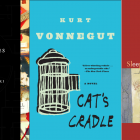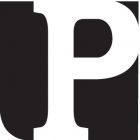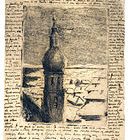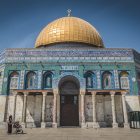Literary Boroughs #31: Chicago
The Literary Boroughs series will explore little-known and well-known literary communities across the country and world and show that while literary culture can exist online without regard to geographic location, it also continues to thrive locally. Posts are by no means exhaustive and we encourage our readers to contribute in the comment section. The series will run on our blog from May 2012 until AWP13 in Boston. Please enjoy the thirty-first post on Chicago, by Larry Sawyer. -Andrea Martucci, Ploughshares Managing Editor
Chicago is equal parts haute couture and bizarre Americana, a quality reflected in its literary scene. Chicago is also expansive and writers here do have fairly catholic tastes. There are also so many of them, it would be impossible to name them all here.
If you do decide to make the move to Chicago, you will find that on any given night there are multiple opportunities to see something truly remarkable—if you’re up to the task of finding it. Often, events are free or event organizers might ask for a suggested donation. Generally speaking, many literati around Chicago harbor a genuinely welcoming attitude toward newcomers. If pressed to say, I believe it’s this welcoming attitude and an acceptance of experimentalism that makes Chicago unique. Not to mention Chicago’s lakefront and architecture, which are incomparable. (Also, what’s not to love about Chicago’s literary history? Wicker Park, for example, was home to outsider artist Henry Darger, who wrote the longest novel in existence, which provided the inspiration for John Ashbery’s book-length poem titled Girls on the Run.)
Whether one attends a reading in an art gallery, loft, bookstore, bar, along the lake, or in a cramped living room, what also makes Chicago’s literary scene unique, no matter how compartmentalized it may sometimes seem, is the fact that careerism hasn’t yet completely sucked the heart from it. (Art school unconfidential: MFA programs now draw their fair share of writers to Chicago, but as tuition for some of these programs continues to increase, more reasonably priced alternatives have also emerged, such as The Chicago School of Poetics.) Sandwiched between American Apparel ads, a writer visiting eclectic Chicago will find a cavalcade of poets, young and old. In pounds per square inch, this city probably has more writers and aspiring writers than any other place in America. You won’t be disappointed. (Nota bene: bring a jacket or umbrella.)
What the City is known for/what makes it unique:
Experimental poetry, brick-width pizza, the incredibly scenic lakefront/skyline, Bulls and Bears, genius improv theatre, phenomenal architecture, nightlife, the Magnificent Mile
Some resident writers:
A sampling of poets: Quraysh Ali Lansana, Virginia Konchan, David Hernandez, Li-Young Lee, Michael Robins, Parneshia Jones, Tony Trigilio, Daniel Borzutzky, Jennifer Karmin, Sterling Plumpp, Jacob Saenz, Marc Smith, Philip Jenks, Kenyatta Rogers, Jill Magi, Kevin Coval, Patrick Durgin, Simone Muench, Ed Roberson, David Trinidad, Nathan Hoks, Toni Asante Lightfoot, Barbara Barg, John Wilkinson, Lina Ramona Vitkauskas, Roger Reeves, Timothy David Rey, Reginald Gibbons, Robert Archambeau, David Pavelich, Don Share, William Fuller, Todd McCarty, Joel Craig, Francesco Levato, Krista Franklin, Anthony Madrid, Garin Cycholl, Larry Sawyer, Dan Godston, Laura Goldstein, Ray Bianchi, Gene Tanta
Fiction writers: Achy Obejas, Stuart Dybek, Don De Grazia, Aleksandar Hemon, Luis Alberto Urrea, AD Jameson, Billy Lombardo, Cris Mazza, Chris Ware, Zak Mucha, Rosellen Brown, Gina Frangello, Adam Levin, Joe Meno, Rebecca Skloot, Samuel Park, Adam McOmber, Tim Jones-Yelvington
Where to learn:
Chicago has no shortage of well-established institutions of learning, as well as the newly formed and the genuinely innovative. The Chicago School of Poetics, for example, offers affordable online poetics classes, as well as on-location poetics classes at the Cultural Center of Chicago—located at 78 E. Washington Street just across from the massive and very silver Cloud Gate outdoor sculpture at Millennium Park. In addition to that there are classes in creative writing offered on the northside, southside and all points in-between.
Chicago loves poets and the teaching of poetry and fiction at venerable institutions such as Chicago State University; the cultural hub that is Columbia College Chicago; the well-respected DePaul University in trendy Lincoln Park; Loyola University Chicago on the north side, on the lake, and in the progressive and diverse neighborhood of Rogers Park; Roosevelt University; the multi-disciplinary School of the Art Institute of Chicago; the tweedy and world-renowned University of Chicago; and the University of Illinois-Chicago, which has a faculty comprising numerous established, talented writers of poetry and fiction.
Where to find reading material:
One of my favorite bookstores, The Armadillo’s Pillow in Rogers Park, allows patrons to lounge comfortably in many an odd shaped chair; you’re bound to find many quirky treasures there. If Chicago has seen bookstores struggling in the past few years, business seems booming now. The flâneur and Romantic in you will find that hours disappear like mere seconds while pausing among the stacks in shops like Barbara’s Bookstore; Lincoln Square’s Book Cellar; the colossal Harold Washington Library, which is replete with massive forbidding green gargoyles; Myopic Books, which is known for its long-running poetry series and three floors of amazing finds; the Newberry Library, which is celebrating its 125th anniversary; Open Books; Powell’s Bookstore; Quimby’s, which stocks a glut of graphic novels, comics, and magazines; the Read/Write Library Chicago; the iconic Seminary Co-Op in Hyde Park; and Andersonville’s solid little corner bookstore Women and Children First.
Where to get published:
Chicago has matured beyond its “big-shoulders” phase and, now famous for the page as well as the stage, is home to many independent and established presses publishing poetry and fiction in journal and book form. From letterpress editions to large, glitzy hardbound editions, in Chicago publishing runs the gamut, and the tastes are as encyclopedic and varied as Chicagoland itself. This is by no means a comprehensive list: some journals and presses include After Hours, Another Chicago Magazine, Chicago Publishes, the seminal Chicago Review, the letterpress wonder Convulsive Editions, Columbia College’s journal Court Green, Cracked Slab Books, Dancing Girl Press, Fifth Wednesday, Flood Editions, Make Magazine, milk magazine, Poetry, Rhino Magazine, and Say What.
Where to write:
There are hundreds of historic bars and cafés with undeniable local flavor in addition to the massive Harold Washington Library. Although farther south, Hyde Park provides some awesome views of the lakefront and skyline looking north. Oak Park and Forest Park to the west can be a sometimes welcome relief from the grueling pace of the city. Whether you’re sitting outside in a café or a booth inside during the winter, Chicago genuinely inspires. (Must see neighborhoods and sights: Andersonville, Pilsen, Rogers Park, Wicker Park.)
Events/Festivals:
Chicago Humanities Fest, Palabra Pura, Red Rover Reading Series, The Danny’s Tavern Reading Series, Story Week Festival of Writers, Printers’ Row Lit Fest, Rhino Reads, Myopic Books Poetry Reading Series, Wit Rabbit Reading Series, Revolving Door Reading Series, Woman Made Gallery, Underground Wonder Bar, Jak’s Tap, Chicago Way, The Guild Complex, Sappho Salon Series, Windy City Story Slam
Larry Sawyer has curated the Myopic Books Poetry Reading Series in Wicker Park, Chicago since 2005 and has hosted readings there nearly every weekend that have included poets such as Eileen Myles, Ron Silliman, Cole Swensen, and Bernadette Mayer, as well as many Chicago-area poets. He was chosen as Best Poet in Chicago by The Chicago Reader in its 2012 Best of Chicago Readers’ Poll. He is co-director of The Chicago School of Poetics. His collection Unable to Fully California is available on Otoliths Press. Sawyer also edits milk magazine (since 1998). His work was anthologized in The City Visible: Chicago Poetry for the New Century (Cracked Slab Books).



